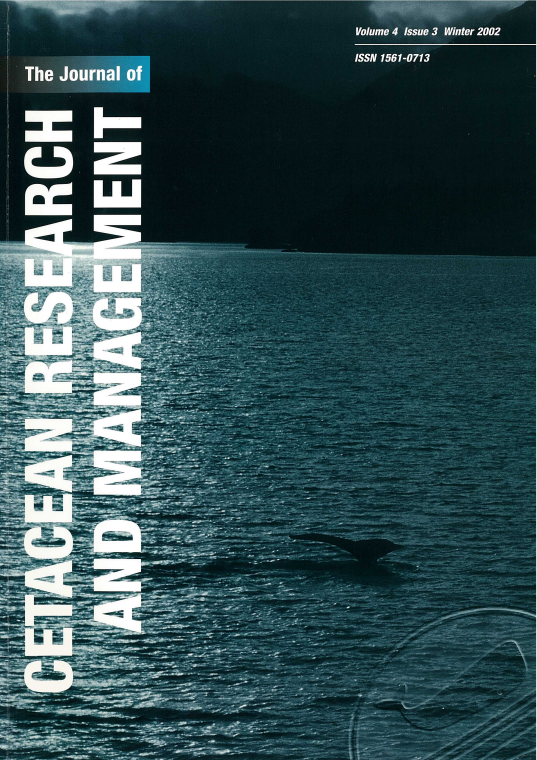Abundance, range and movements of a feeding aggregation of gray whales (Eschrichtius robustus) from California to southeastern Alaska in 1998
Main Article Content
Abstract
This study documents the range, abundance and movements of a feeding aggregation of gray whales (Eschrichtius robustus) in the Pacific northwest. Identification photographs were collected by eight collaborating organisations between March and November 1998. Surveys extended between northern California and southeastern Alaska. Effort was variable by region and was concentrated off the northern Washington coast and Vancouver Island. Of 1,242 occasions when suitable photographs of gray whales were obtained in 1998, 155 unique whales were identified. Each individual was photographed an average of 8.0 times (SD = 8.4, range 1-42) and the average tenure of whales seen multiple times was 56 days (SD = 41, range 1-170). Whales seen longer than three months generally were seen in multiple regions. Movements among regions in 1998 were documented for 57 whales with the most frequent interchange among three adjacent areas from northern Washington to central Vancouver Island. The overall pattern of movements among regions was complex; whales were not always moving in the same direction at the same time of year. Movements within 1998 among more distant locations did occur but were less frequently observed. Total distances between resighting positions for individual whales ranged from < 1 to 526 n.miles. Most whales photographed in 1998 had been identified in previous years when compared to photographs collected by some of the collaborators. At least 86 (55%) of the whales identified had been seen previously. The rate of inter-year resightings was highest for whales identified off northern Washington and three areas off British Columbia (from southern Vancouver Island to north of Vancouver Island). In these areas, from 70-100% of the whales seen in each region had been photographed previously. Mark-recapture abundance estimates based on comparisons to samples in 1996 and 1997 were 181 and 179, respectively. The management implication for these whales has become controversial due to the resumption of whaling by the Makah tribe in northern Washington, an area used by both migrating and feeding whales. This research shows that there are a few hundred gray whales that range in summer months from at least northern California to southeastern Alaska. The mechanism by which these animals are recruited into this group and the degree to which they should be managed as a separate unit from the overall population is not resolved.
Article Details

This work is licensed under a Creative Commons Attribution-NonCommercial 4.0 International License.
You are free to:
- Share copy and redistribute the material in any medium or format
- Adapt remix, transform, and build upon the material
- The licensor cannot revoke these freedoms as long as you follow the license terms.
Under the following terms:
- Attribution You must give appropriate credit, provide a link to the license, and indicate if changes were made. You may do so in any reasonable manner, but not in any way that suggests the licensor endorses you or your use.
- NonCommercial You may not use the material for commercial purposes.
- No additional restrictions You may not apply legal terms or technological measures that legally restrict others from doing anything the license permits.

